|
|
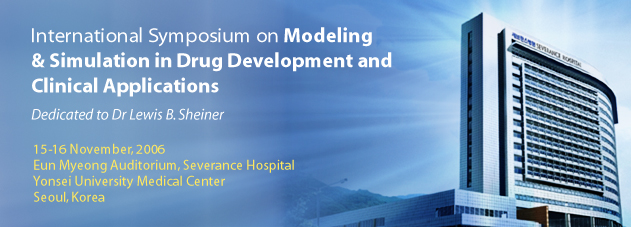 |
|
 |
|
No. |
Name |
Postion
/ Subject |
1 |
Nick Holford |
Associate Professor,
Univ of Auckland, New Zealand /
Modeling
of Disease: The Time Course of Depression
-- What Happens in Clinical Trials?
|
2 |
Mats Karlsson |
Professor, Uppsala
Univ, Sweden /
Modelling
of the glucose-insulin system |
3 |
Suneel Gupta |
Vice president,
ALZA corporation, USA /
Pharmacokinetic
and Pharmacodynamic Guided Product Design
|
4 |
Pascal Girard |
INSERM - EA 3738
Univ Lyon I, France /
Impact
of non compliance on anticancer oral drugs:
in silico study using PK-PD models with application
to continuous and categorical biomarkers |
5 |
Jaap Mandema |
Quantitative Solutions
Inc, USA /
Value of model-based
meta-analyses for drug development and approval |
6 |
Paolo Vicini |
Associate Professor,
Univ of Washington, USA /
Promises
and challenges: what lies ahead for population
modeling? |
7 |
Terry Blaschke |
Professor, Stanford
Univ, USA /
Antiretroviral
Drugs for HIV Infection: What Allowed Surrogate
Endpoints to be Used for Approval? |
8 |
Hui Kimko |
Johnson &
Johnson, USA /
Utility
of Monte Carlo Simulation in Anti-infective
Agent Development |
9 |
Carl Peck |
Professor, UCSF,
USA /
Factors Affecting
Impacts of PKPD in Drug Development &
Regulation |
10 |
Dongwoo Kang |
Pfizer, USA /
Application of adaptive
design to enhance clinical trial |
11 |
Howard Lee |
Adjunct Associate
Professor, Univ of Pittsburgh, USA /
Talking
Technology to Nontechnoligical Audience |
12 |
Atsunori Kaibara |
Astellas Pharmaceutical
Corp., Japan /
Modeling
and simulation approach for study design of
FK506 (tacrolimus) in patients with ulcerative
colitis |
13 |
Yoshitaka Yano |
Associate Professor,
Kyoto Univ, Japan /
Prediction
of pharmacokinetic profile in pediatric patients
from data in adults for intravenous beta-lactam
antibiotics |
14 |
Yusuke Tanigawara |
Professor, Keio
Univ, Japan /
Importance
of PK/PD in Internationally Harmonized Drug
Development |
15 |
Kenichiro Yoshida |
Taiho Pharmaceutical
Corp. Japan
Application
of PPK modeling and simulation to clinical
development of S-1, a DPD inhibitory fluoropyrimidine
|
16 |
Tomoo Funaki |
Otsuka Pharmaceutical
Corp. Japan /
Population
PK/PD analysis of compound X to find appropriate
dosage regimen in clinical trial |
17 |
Takahiko Tanigawa |
Bayer Yakuhin,Ltd,
Japan /
Detection
and prediction of drug safety |
18 |
Takuya Okagaki |
Tanabe Seiyaku
Co., Ltd, Japan /
PK/PD
model building and validation |
19 |
Liping Zhang |
Bristol-Myers
Squibb Co., USA /
Simultaneous versus
sequential population PK/PD modeling |
|
|
| |
Profiles |

Nick Holford
|
Biography
Dr Holford is currently an Associate Professor at
the University of Auckland. His research interests
include population PKPD analyses of clinical trials
of drugs and clinical trial simulation. He is currently
developing the use of disease progress models for
understanding clinical pharmacology with an emphasis
on the effects of levodopa in Parkinson's Disease,
drugs affecting post-menopausal bone loss, and the
time course of response to anti-depressants.
A brief description of the presentation
It is widely accepted that anti-depressant drugs
take some weeks to reach their greatest effect in
the relief of depression. Clinical trials of anti-depressants
often demonstrate marked responses to placebo treatment.
The time course of the placebo response can be quantitated
and the patterns of response used to understand
the magnitude and time course of anti-depressant
drug effects. Patterns of response within the time
frame of a clinical trial include a monotonic improvement
(decrease) in the Hamilton Depression (HAM-D) rating
scale or an initial improvement with subsequent
worsening. These patterns of response are partly
explained by the design of the clinical trial especially
the frequency of HAM-D observation. In the analysis
of clinical trial outcome it is commonly assumed
that the response to active treatment is additive
to the placebo response. Clinical trial data were
supplied by three pharmaceutical companies. Data
included responses to placebo, marketed anti-depressants
and drugs being investigated for anti-depressant
effect. Based on the assumption that placebo response
and active drug response are additive it is has
been possible to describe the time course and magnitude
of change in HAM-D attributable to anti-depressant
drugs. A dose response relationship has been demonstrated
with a rapid onset of action. There is no evidence
that anti-depressant drugs take weeks to achieve
their peak effect.
|
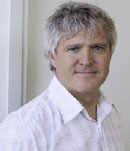
Mats Karlsson
|
Biography
Mats Karlsson is professor of Pharmacometrics at
Uppsala University, Sweden where he leads a research
group of about twenty modellers. He received his
PhD in pharmacokinetics from this university in
1989 and has been a research fellow at University
of Glasgow and University of California, San Francisco,
and a visiting professor at Georgetown University,
Washington DC. He has received the Giorgio Segre
Prize from EUFEPS and is editor for the Journal
of Pharmacokinetics and Pharmacodynamics. His research
interests focus on methodological aspects of non-linear
mixed effects model building and applied PKPD modelling.
He has published over one hundred original research
articles in the area of PK and PKPD.
A brief description of the presentation
He will describe of a joint non-linear mixed effects
model for glucose and insulin across several tolerance
tests. It will discuss also glucose - HbA1c modeling
following long-term therapy.
|

Suneel Gupta |
Biography
Dr. Gupta is presently Sr. Vice President of Non-clinical
and clinical R&D and a member of the Management
Board at ALZA Corporation, a Johnson & Johnson
company. Dr. Gupta joined ALZA in 1989 and has held
several positions since joining ALZA. Previously
he also held senior position at Ciba-Geigy (now
Norvatis) in manufacturing and scale-up of pharmaceuticals.
He received PhD from University of Manchester under
Prof Rowland and completed a postdoctoral fellowship
from UCSF under Prof. Benet. He is presently responsible
for Departments of pre-clinical pharmacology, Toxicology,
Pharmacokinetics and Dynamics, Clinical Research,
Clinical Operation, Biostatistics and Clinical Development.
At present, he is responsible for leading the discovery
of products based using drug delivery. He is winner
of Alza Founders Award (highest honor in ALZA) in
2001 for his vision in leading research. He is also
winner of Johnson and Johnson Medal in 2002 (J&J’s
highest scientific honor) for his creative scientific
and technologically commercially successful innovations
in the field of clinical pharmacology. He has been
a lead member of clinical teams working for the
approval of several products, such as Duragesic®,
Nicoderm®, Effidac®, Covera-HS®, Ditropan-XL and
Concerta® and Ionsys®. He has conceived and patented
the effect of delivery profile on clinical value
including once a day oxybutynin and unique controlled
release methylphenidate product. At present his
research interests focus on the influence of rate
and route of drug delivery to maximize clinical
utility and/or effectiveness. He has more than 36
patents and co-authored over 200 publications, chapter
and presentations dealing with these subjects. He
is a reviewer for many scientific journals, and
is a member of AAPS, AACP and ASCPT.
A
brief description of the presentation
PK-Pd modeling is generalized utilized to describe
the PK and PD data and developing correlations to
generate and test various hypotheses. More recently
modeling is being used to design the clinical trials
and make dosing recommendation. Modeling has also
been successful in developing clinically differentiated
products using same basic principles. This talk
will focus on several examples of successful products.
|
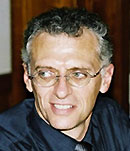
Pascal Girard |
Biography
Pascal Girard, PhD, is currently INSERM researcher
working at Lyon University in a clinical oncology
team. His research interest is population pharmacokinetic-pharmacodynamic
(PK-PD) modelling and non compliance to oral treatment.
He has successively been working as researcher at
Lyon Clinical Pharmacology Unit with Prof. Boissel,
then visiting assistant Professor at UCSF with Prof.
Lewis Sheiner and as senior scientist at Pharsight
Corp, applying PK-PD to various domains as cardiology,
endocrinology and now oncology. He is one of the
historical founding members of the Population Approach
Group in Europe (PAGE).
A brief description of the presentation
Nowadays, more and more oral anticancer chemotherapies
are developed either for cytotoxic or new targeted
drugs. This relatively new route of administration
in oncology means new issues in treatment management
and among all deviation of the actual way patients
take their treatment with the prescription. After
a brief review on recent developments about oral
chemotherapies, the presentation will show how population
PK-PD modelling & Monte Carlo simulation can
be used to quantify the impact of non compliance
to oral anticancer prescriptions, on either continuous
or categorical biomarkers.
|

Jaap Mandema |
Biography
Jaap is currently President and CEO of Quantitative
Solutions, a
consultancy firm that provides modeling and simulation
solutions to the pharmaceutical industry. Prior
to starting Quantitative Solutions, Jaap was Chief
Scientific Officer at Extropy Pharmaceuticals from
2004 to 2005. Extropy was a startup pharmaceutical
company focused on developing drugs to treat children’s
illnesses. Before joining Extropy, Jaap was Senior
Vice President and Chief Scientific Officer at Pharsight
from 1996 to 2004. Pharsight provides software and
consulting services to the Pharmaceutical industry
to improve the efficiency of drug development. Previous
to joining Pharsight, Jaap was Director of New Products
Discovery at ALZA Corporation, responsible for defining
new product opportunities for Alza’s delivery technologies.
Jaap started his professional career as an Assistant
Professor of Pharmaceutical Sciences at the Department
of Anesthesia, Stanford University School of Medicine.
He received his Ph.D. (cum laude) from the division
of pharmacology at the Center for Bio-Pharmaceutical
Sciences, University of Leiden and his master’s
degree (cum laude) from the school of Pharmacy,
University of Utrecht, the Netherlands. Jaap’s research
interests afre application of modeling and simulation
to optimize treatment strategies, trial designs,
and drug development decision-making. He has published
extensively and received several awards for his
academic contributions, among which in 2000 the
Tanabe Young Investigators Award from the American
College of Clinical Pharmacology and in 2005 the
Leon Goldberg Young Investigator Award from the
American Society for Clinical Pharmacology and Therapeutics.
A brief description of the presentation
Value of model-based meta-analyses for drug development
and approval
Modeling applications in pharmaceutical development
have undergone some significant changes over the
past few years. Application has shifted from analysis
of independent trial results to integration of large
quantities of data from multiple compounds and scaling
between multiple endpoints. The purpose of which
is two-fold: 1) to better understand the likely
clinical safety and efficacy profile of the compound
in development by borrowing information from competitors,
pre-clinical experiments, and biomarker studies;
2) to better understand the competitive landscape
and (clinical) value of the compound early in development.
In this presentation several examples will be shown
that illustrate the value of model-based approaches
to drug development. Because of the value that has
been illustrated by these and other examples, drug
and disease models are starting to play a crucial
role in guiding drug development decisions and regulatory
interactions. They can play this role because the
models provide an objective summary of the knowledge
on the compound in development, disease, patients,
and competitors. It is my belief that this model-based
approach to drug development improves the efficiency
of the development process by fully leveraging available
information and by unleashing more efficient trial
designs.
|
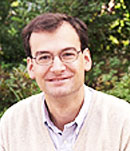
Paolo Vicini
|
Biography
Paolo Vicini, Ph.D., is currently an Associate Professor
with the Department of Bioengineering at the University
of Washington. He received his Laurea degree in
Electronics Engineering from the University of Padova,
Italy, in 1992, and his doctoral degree in Bioengineering
from the Polytechnic of Milan, Italy, in 1996. He
directs the Resource Facility for Population Kinetics
(RFPK, http://www.rfpk.washington.edu), a NIH/NIBIB
research resource focused on the advancement and
dissemination of technology for biomedical data
modeling, especially nonlinear mixed effects modeling.
His research focuses on open problems in the development
of mathematical and statistical models of clinical
and other biological data. In particular, he has
worked on optimal design of experiments, parameter
estimation techniques, issues of model selection
and various practical applications of mathematical
modeling and simulation. He received the IEEE/EMBS
Early Career Award in 2003.
A brief description of the presentation
It will describe some of the opportunities and challenges
awaiting pharmacostatistical model development,
or population analysis, in the coming years. Promises
lie in the increased amount of interest and confidence
awarded to this relatively new technology in various
areas of science and biomedical research, where
it is widely regarded as a very useful tool and
sometimes the only feasible avenue to extract information
from data that would be otherwise impossible to
gauge. Challenges lie in the sophistication of the
technology, the difficulty of making drastic methodological
advances and the relative scarcity of trained professionals,
but especially of opportunities for training. Strategies
and possibilities to increase the potential of population
modeling and simulation in drug development and
academic research alike will be discussed.
|
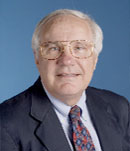
Terry Blaschke
|
Biography
Terrence F. Blaschke, MD, is Professor of Medicine
and of Molecular Pharmacology (Active Emeritus)
at Stanford University School of Medicine, Adjunct
Professor of Biopharmaceutical Sciences at UCSF
and Adjunct Professor of Medicine at Indiana University
Dr. Blaschke received his medical degree from Columbia
University College of Physicians and Surgeons, and
after residency training in Internal Medicine at
UCLA Center for Health Sciences, he was a Clinical
Associate in the NCI/Metabolism Branch at the National
Institutes of Health. Following fellowship training
in Clinical Pharmacology at the University of California,
San Francisco, Dr. Blaschke joined the faculty at
the Stanford University School of Medicine in 1974.
Dr. Blaschke’s research has been primarily in the
area of clinical investigation, with considerable
involvement related to the clinical pharmacology
of drugs used in patients with HIV infection, and
an emphasis on modeling exposure-response relationships.
He was a member of the AIDS Clinical Trials Group
at its inception, and has served as chair of the
Pharmacology Committee and a member of the Executive
Committee of the ACTG. His current efforts in HIV
are directed at questions related to the use of
antiretroviral agents in less developed countries.
His interest in exposure-response has led to a related
interest in the topic of patient adherence with
prescribed treatment regimens in HIV-infected patients.
His involvement in clinical trials and with the
pharmaceutical industry has also lead to a strong
interest in approaches to improve the drug development
process.
Dr. Blaschke is a past president of the American
Society for Clinical Pharmacology and Therapeutics.
In 2002 he received the Rawls-Palmer award from
ASCPT for significant contributions to drug investigation
that bring the efforts of modern drug research to
the care of patients and in 2006 received the Henry
W. Elliott distinguished service award of the Society.
He has been a consultant and past Chair of the Generic
Drugs Advisory Committee of the US FDA and is currently
a member of the Nonprescription Drugs Advisory Committee.
He chaired the Drug Utilization Review Panel of
USP from 1995-2000.
A brief description
of the presentation
The history of antiretroviral drug development will
be reviewed and the value of various data sources
and disease models in establishing HIV RNA copy
number and CD4 cell counts as surrogate markers
will be illustrated.
|
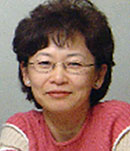
Hui Kimko
|
Biography
Dr. Hui Kimko works at Johnson & Johnson
Pharmaceutical Research & Development in New
Jersey from 2002 by joining Advanced Pharmacokinetic/Pharmacodynamic
Modeling and Simulation Department. She teaches
at School of Pharmacy of Rutgers University as
an adjunct professor and mentors a PhD student
of Department of Industrial & Systems Engineering.
Before joining the company, she was an assistant
professor at the Center for Drug Development Science
of Georgetown University Medical School in Washington,
D.C.
She got her PhD in Pharmaceutical Science from
the State University of New York at Buffalo on
Pharmacokinetic and Pharmacodynamic Modeling of
Direct and Indirect Responses. She holds a B.S.
degree in Pharmacy from Seoul National University
and an M.S. degree in Biochemistry from University
of California, Riverside. She edited the book
titled Simulation for Designing Clinical Trials:
A Pharmacokinetic/Pharmacodynamic Modeling Perspective
(published by Marcel Dekker, Inc. 2003). The book
explains how to optimize clinical trial design
via pharmacokinetic-pharmacodynamic modeling and
clinical trial simulation in order to enhance
study success rate and, in return, help reduce
the skyrocketing cost of conducting trials with
human subjects. Optimization of clinical trial
designs is her current interest.
A brief description of the presentation
The decision processes of designing clinical trials
have followed a largely ad hoc manner, driven by
empiricism and embracing concepts such as ‘what
was done previously’ and ‘it has always been done
this way’. In contrast, other disciplines have been
effectively designing experiments using statistical
techniques to aid design for many years but it is
only recently that these methods have filtered into
the clinical pharmacological arena. Simulation has
become a powerful tool for the practitioner due
to its generality of application to a wide array
of potential problems. In addition, simulation gains
credibility with the non-scientist since it can
be explained in essentially non-scientific terms,
which allows its transparency to be grasped with
ease. It is not surprising, therefore, that clinical
trial simulation (CTS) has been used in designing
clinical trials in drug development (1-2).
CTS is to generate responses of virtual subjects
by approximating (a) trial design, and (b) human
behavior, (c) disease progress and (d) drug behavior
using mathematical models and numerical methods.
The trial design that is needed for CTS includes
to-be-decided dosage regimen, subject selection
criteria, study period and study size. Human behavior
includes trial execution characteristics such as
adherence in drug administration (pertaining to
enrolled patients) and missing records (pertaining
to the investigators). Disease status may change
during a trial, for which a disease progress model
may need to be developed. The drug behavior in the
body is generally characterized by pharmacokinetic
(PK) and pharmacodynamic (PD) models. These models
are developed from prior experience and/or prior
data.
Understanding the relationship between antibiotic
concentration and the antimicrobial effect is necessary
for eradicating the pathogen. The Monte-Carlo approach
represents the state of the art methodology in anti-infective
research for dose-selection of new drug entities.
These methods take the exposure-response relationship
into consideration and allow examination of what
if scenarios such as the effect of administering
a dose not studied during development. Monte Carlo
computations are fairly rigorous and explicitly
account for sources of variability that can impact
the possibility of successful treatment with a new
drug entity. The sources of variability include
a) inter-subject PK variability; b) non-linear bioavailability
due to various solubility rate limited absorption;
c) formulation and food effect on relative bioavailability;
d) within-species pathogen sensitivity to the drug,
e) between-species pathogen sensitivity to the drug;
and f) natural occurrence frequency of pathogens
in a clinical setting. By taking into account sources
of biological variability and by recognizing the
pharmacological interaction between the pathogen,
host and drug, an educated decision can be made
regarding a dosing regimen that is most probable
of succeeding in a future clinical trial.
(1) N.G.H. Holford, H.C. Kimko, J.P.R. Montelone
& C.C. Peck: Simulation of Clinical Trials.
Annu. Rev. Pharmacol. Toxicol. 49:67-95, 2000
(2) H.C. Kimko & S.B. Duffull, eds: Simulation
for Designing Clinical Trials - A Pharmacokinetic-Pharmacodynamic
Modeling Perspective. Marcel Dekker, 2003
(3) G.L. Drusano, S.L. Preston, C. Hardalo, R. Hare,
C. Banfield, D. Andes, O. Vesga, W.A. Craig. Use
of preclinical data for selection of a phase II/III
dose for evernimicin and identification of a preclinical
MIC breakpoint. Antimicrob. Agents Chemother. 2001;
45:13-22.
|
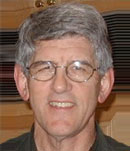
Carl Peck |
Biography
Dr. Peck obtained a B.A. in mathematics and chemistry
from the University of Kansas in 1963 and the M.D.
in 1968. Following training in internal medicine,
he undertook a research fellowship in clinical pharmacology
at the University of California San Francisco (1972-74).
From 1974 to 1980, Dr. Peck was employed at the
Letterman Army Institute of Research, San Francisco,
CA, as Chief of the Army Blood Preservation Research
Program. In 1980, Dr. Peck became Director of the
Division of Clinical Pharmacology and, Professor,
Departments of Medicine and Pharmacology, Uniformed
Services University, Bethesda, Maryland. Dr. Peck
joined the FDA as Director, Center for Drug Evaluation
and Research, in October 1987. He was promoted to
Assistant Surgeon General in the Public Health Service
in October 1990. Retiring from FDA in late 1993,
Dr. Peck was appointed “Boerhaave” Professor of
Clinical Drug Research at Leiden University in The
Netherlands. In 1994 Professor Peck joined the faculty
of the Georgetown University Medical Center, as
the founding Director of the Center for Drug Development
Science. In 1999, Dr. Peck received the FDA Distinguished
Alumnus Award. Sweden’s University of Uppsala conferred
an honorary doctorate degree (Doctor Honoris Causa)
to Dr. Peck in January 2002 in recognition of "outstanding
contributions to the science of drug development".
Dr. Peck founded NDA Partners LLC in 2003 and in
2004, CDDS moved to UCSF, located in the UC-Washington
Center. His research interests center on optimizing
drug development and regulation. He is an author
of more than 100 original research papers, chapters
and books. Dr. Peck serves on numerous scientific
advisory boards to industry and government institutions,
and is a member of several boards of directors.
A brief description of the presentation
Integration of PKPD modeling and simulation (M&S)
in new drug development programs may afford one
or more of the following advantages over traditional
empirical development approaches: (1) enhanced learning
about relationships among drug dosage, metabolism,
and tissue concentrations to biomarkers and clinical
measures of safety and effectiveness, (2) testing
of assumptions critical to safety, effectiveness
and market acceptance, with respect to drug actions,
dosage regimens, routes of administration, etc,
(3) informative trial design and optimization of
trial design features, (4) enhanced data analysis
for learning and confirming from all trials, and
(5) enlightened regulatory guidance, review and
approval of M&S-intensive regulatory submissions.
Despite the above listed advantages, utilization
of rapidly advancing PKPD M&S technology by
the pharmaceutical and biotech industries and
regulatory agencies has been slow and incomplete.
This presentation will identify barriers to greater
integration of PKPD M&S in drug development
and regulation, factors that may enhance acceptance,
and avenues for further advancement of advantageous
incorporation in future new drug development programs
and regulatory procedures.
|
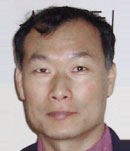
Dongwoo Kang
|
Biography
* BS in Eletrical Engineering, Seoul National University,
Seoul, South Korea,1989
* Biomedical Engineering Lab., Seoul National University
Hospital, Seoul, South Korea,1995
* MS in Biomedical Engineering, University of Southern
California, Los Angeles, CA, 1998
* PhD in Biomedical Engineering, University of Southern
California, Los Angeles, CA, 2000
* Postdoc Training in Biopharmaceutical Sciences,
University of California San Francisco, San Francisco,
CA, 2003
* Scientist at ALZA Corp., A Johnson & Johnson
Company, Mountain View, CA, 2006
* Scientist at Pfizer Global Research & Development,
San Diego, CA, Present
A brief description of the presentation
An adaptive design allows an investigator to monitor
the acruing efficacy data to make important decisions
(such as sample size, dose levels, etc) concerning
the future course of the study. Thus, the investigator
can have the options to make adaptive changes to
the initial design with verification of design assumptions
(variance, effect size, covariate effects, etc.)
and to either terminate for futility, change dose
levels, drop ineffective arms, or divert key resources
to more promising studies. By taking advantage of
these opportunities, the investigator can reduce
the clinical study cost or achieve the study objective
more efficiently. An adaptive design is employed
in a phase II study to make a go/no-go decision
as well as to characterize the dose reponse. A simulation
study is used to demonstrate the utility and advantage
of the proposed adaptive design study.
|
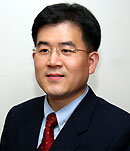
Howard Lee |
Biography
Howard Lee, MD, PhD, is an Adjunct Associate Professor
of Biopharmaceutical Sciences, School of Pharmacy,
UCSF. Dr. Lee also serves as the Director for the
Center for Drug Development Science, UC Washington
Center. Prior to that, Dr. Lee was
a Research Assistant Professor (2005-2006), Center
for Clinical Pharmacology, Department of Medicine,
University of Pittsburgh School of Medicine, and
served as the Associate Director for the Clinical
Investigation Core. Dr. Lee was an Assistant Professor
(2002-2004), Georgetown University Medical Center,
and Assistant Clinical Professor and Associate Director
(2004), Center for Drug Development Science, University
of California San Francisco, affiliated with School
of Pharmacy.
Dr. Lee is a graduate of the Seoul National University
College of Medicine, Seoul, Korea, where he received
the MD (1988), MSc (1991, Epidemiology), and PhD
(1997, Preventive Medicine and Epidemiology) degrees.
He has a diploma in Advanced Management Program
for Health Industry (1997, Sejong University, Graduate
School of Public Administration, Seoul, Korea).
Dr. Lee also completed internship and residency
training in the Seoul National University Hospital
(1988 - 1991), and is board certified in Family
Medicine. Dr. Lee also undertook a postdoctoral
fellowship in clinical pharmacology, pharmacometrics,
and drug development science at the Center for Drug
Development Science, Department of Pharmacology,
Georgetown University Medical Center under the supervision
of Prof. Carl C. Peck (2000-2001). During his fellowship,
Dr. Lee worked as a Guest Medical Reviewer for 4
months at the Division of Cardio-Renal Products,
Center for Drug Evaluation and Research, US Food
and Drug Administration.
Dr. Lee was the co-PI for clinical pharmacology
of the Washington Obstetric Pharmacology Research
Unit Network grant (NIH HD-03-017) affiliated with
Georgetown University Medical Center, and has also
served as the co-I of the Collaborative Pediatric
Pharmacology Research Unit Network grant (NIH HD-03-001).
Dr. Lee is the PI of the Merck Foundation Grant,
entitled “A Systematic Policy Analysis to Identify
Key Strategies for Implementing Good Review Practices
into the Korea Food and Drug Administration”.
Dr. Lee’s current research interests include:
1. Drug dosage changes since regulatory approval:
This is to determine the hazard of dosage change
after approval for drugs approved 2000-2005 and
compare it to the one of previously approved drugs
(i.e., 1980-1999)
2. Key factors for successful regulatory approval:
This is to assess the impact of good clinical pharmacology
practices on the likelihood of drug approval
3. Disease progression modeling: This is to develop
a disease progression model for rheumatoid arthritis
clinical endpoints
4. PK-PD model for the safety endpoints: This is
to explore the methodological framework for a PK-PD
model of the safety endpoint
A
brief description of the presentation
The target audiences for the results of a pharmacokinetic-pharmacodynamic
model are often lacking background knowledge and
experience in quantitative sciences. Therefore,
it is important for modelers to develop strategic
communication skills, and this becomes more crucial
when talking to the regulatory reviewers. In this
presentation, an overview of the issues of technological
communication in the context of the nontechnolgical
audience will be made. Some points to consider will
be also addressed.
|
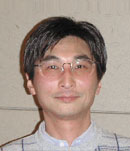
Atsunori Kaibara |
Biography
Dr. Atsunori Kaibara is Senior Manager of Clinical
Pharmacology, Astellas Pharma Inc., Japan. He received
B.S., M.S. and Ph.D. degree in pharmaceutical sciences
from Kyoto University. He had experienced preformulation,
drug metabolism, and clinical/non-clinical PK/PD
analysis in his earlier career at Fujisawa Pharmaceutical
Company after joining in 1990. In 1995-6, he worked
with Professor Lewis Sheiner at UCSF as a postdoctoral
fellow. In the recent 10 years, he has been responsible
for clinical pharmacology of global projects. Since
2003, he has also joined the Clinical Evaluation
Department, Drug Evaluation Committee of Japanese
Pharmaceutical Manufacture Association (JPMA).
A brief description of the presentation
Immunosuppressive therapy with FK506 (tacrolimus)
is now under developing for an alternative treatment
option to total colectomy for patients with ulcerative
colitis (UC) in Japan. PK/PD analysis has justified
drug concentration oriented dosage of FK506. Modeling
& simulation utilized to establish appropriate
control method of dosage for achieving desirable
concentration profile will be discussed.
|
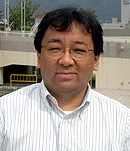
Yoshitaka Yano
|
Biography
* Current Position:
Associate Professor, Graduate School of Pharmaceutical
Sciences, Kyoto University, Japan. (May, 2006 -
)
* Professional Experiences:
Research Scientist in Shionogi Research Laboratories,
Shionogi & Co., Ltd., Japan. (April, 1990 -
April, 2006);
Postdoctoral fellow at University of California,
San Francisco (UCSF; Prof. L.B. Sheiner and S. L.
Beal). (April, 1998 - March, 1999)
* Education:
Ph.D. Pharmaceutical Sciences, Kyoto University.
(1990);
B.S. Pharmaceutical Sciences, Kyoto University.
(1985)
A brief description of the presentation
A prediction method of pharmacokinetic profile in
a pediatric patient based on an empirical Bayesian
method for intravenous beta-lactam antibiotics will
be presented. Based on retrospectively collected
data, a mixed effect modeling was applied to the
allometric relationship of the pharmacokinetic parameters
and individual body weights and also inter-drug
and intra-drug variability of the allometric parameters
were estimated. Using these estimates as prior information,
an empirical Bayesian method was applied to predict
drug specific allometric parameters, and then individual
pharmacokinetic parameters in a pediatric patient
were predicted. The method was evaluated by a leave-one-out
method. A procedure to draw a predicted drug concentration
curve in a patient will be also discussed.
|
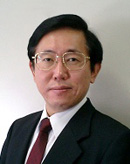
Yusuke Tanigawara
|
Biography
Prof. Yusuke Tanigawara is currently a Professor
and Director of the Department of Pharmacy, University
Hospital, School of Medicine, Keio University. His
responsibilities are multidisciplinary; management
of the pharmacy in University Hospital with 1072
beds, teaching and research.
He received his Ph. D. in pharmacy from Kyoto University
in 1983. His research interests include pharmacokinetics,
pharmacodynamics and pharmacogenomics. He has been
studying the population-based analysis of clinical
pharmacokinetics and pharmacodynamics for a variety
of drugs such as anticancer agents, antimicrobial
agents, cardiovascular agents, analgesics and anticonvulsants,
and its application to new drug development as well
as rational use for patient care. He also investigates
pharmacogenomics and proteomics research for the
clinical impact of genetic polymorphisms and gene
expression on the individual variability of efficacy
and safety of drugs.
He is distinguished as one of the ISI highly cited
scientists in the world. He is currently the President
of the Population Approach Group in Japan, and also
President of the Japanese Association for Therapeutic
Drug Monitoring. Prof. Tanigawara is a central person
in the PK/PD community in Japan.
He serves as a member of Advisory Board Committee
for approval of new drugs of the Ministry of Health,
Labor and Welfare, Japan. He also completed leadership
as Rapporteur to develop the ICH E2E Guideline
“Pharmacovigilance Planning.”
A brief description of the presentation
ICH E5 guideline and the bridging concept Roles
of PK/PD and Population PK Typical successful examples
Keys to success ICH E2E : Pharmacovigilance New
strategy : E5 + E2E combination
|
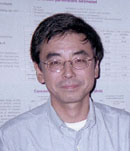
Kenichiro Yoshida |
Biography
Pharmacokinetics Research Laboratory, Taiho Pharmaceutical
Co., Ltd., Japan
| 1987 |
M.D., in Hiroshima University, Japan |
| 1995 |
Ph.D., in Osaka Prefecture University, Japan |
| 1987~present |
Research scientist, in Taiho Pharmaceutical
Co., Ltd., Japan |
Specialized fields
* General pharmacokinetics
* Clinical pharmacokinetic analysis
* Structural chemistry of organic compounds
Memberships
* Pharmaceutical Society of Japan
* The Japanese Society for the study of Xenobiotics
* The Japanese Society of Therapeutic Drug Monitoring
* Japan Society for Bioscience, Biotechnology, and
Agrochemistry
* The Japanese Society of Carbohydrate Research
A brief description of the presentation
S-1 is a new oral pyrimidine fluoride-derived anticancer
agent in which Tegafur (FT) was combined with two
modulators, Gimeracil (CDHP, a DPD inhibitor) and
Oteracil potassium (Oxo, a OPRT inhibitor). Its
pharmacokinetic modeling and simulation as well
as its application to clinical development will
be discussed.
|
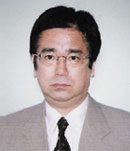
Tomoo Funaki |
Biography
I used to be an assistant professor at the School
of Pharmaceutical Sciences, Showa University, after
graduation of Showa University in 1976. In 1986,
I received a Ph.D. degree in pharmacy. From 1987
to 1988, I was in the Netherlands to be a guest
researcher at the Center for Bio-Pharmaceutical
Sciences, Leiden University under the direction
of Prof. D.D. Breimer. Nearly 16 years back, I moved
to Nippon Roche Research Center/Kamakura, Nippon
Roche Clinical Development/ Tokyo, Roche Biometrics/Basel.
I have long been working towards R&D of several
scientifically interesting and clinically promising
candidates. I’m now working at Otsuka Pharmaceutical
Co., Ltd.
A brief description of
the presentation
The population PK-PD model for compound X in patients
was developed that can be used for simulating the
effect of different dose regimens on urine osmolarity
to support dose selection for upcoming phase III
studies for this target group.
|
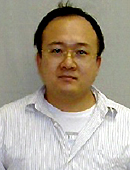
Takahiko Tanigawa |
Biography
Takahiko Tanigawa, Ph.D. is currently Manager of
Clinical Pharmacokinetics of Bayer Yakuhin,Ltd.
He had experienced bioanalytical and PK/PD analysis
in the field of clinical pharmacology. His thesis
is titled “The study of application Population Pharmcopkinetic/Pharmacodynamic
approach in drug development -useful for ethnicity
evaluation and safety evaluation-“. He is a member
of the Clinical Evaluation Department, Drug Evaluation
Committee of Japanese Pharmaceutical Manufacture
Association (JPMA). since 2003.
A
brief description of the presentation
My talk is the evaluation of the relationship between
plasma concentration of moxifloxacin and QT/QTc
interval based on the result of Japanese volunteers
studies by Modeling & Simulation approach.
|
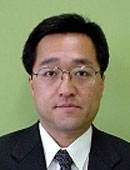
Takuya Okagaki |
Biography
PROFESSIONAL EXPERIENCE:
April 2004 to present
Statistician, Statistical Analysis Section, Clinical
Research Division,
Tanabe Seiyaku Co., Ltd.
April 2003 to March 2004
Researcher, Clinical Pharmacokinetics Group, Analysis
Development Laboratories,
Tanabe Seiyaku Co., Ltd.
April 1999 to March 2003
Researcher, Drug Metabolism & Pharmacokinetics
Division,
Drug Discovery Research Laboratories, Tanabe Seiyaku
Co., Ltd.
April 1987 to March 1999
Researcher, Pharmaceutics Research Laboratory,
Tanabe Seiyaku Co., Ltd.
EDUCATION:
April 2006 to present
Faculty of Engineering, Tokyo University of Science
Master of Pharmacy, March 1987, Kyoto Pharmaceutical
University
Bachelor of Pharmacy, March 1985, Kyoto Pharmaceutical
University
A brief description
of the presentation
A paradoxical result would be obtained occasionally
from population PK/PD analyses. It should be considered
that probabilistic nature of variables might play
various tricks as a cause of the paradox. We will
outline our view for effects of random variables
on the PK/PD modeling and validation. |

Liping Zhang |
Biography
Liping Zhang, PhD, is currently a senior research
investigator in the Strategic Modeling and Simulation
Group at Bristol-Myers Squibb Co. Prior to that,
she was a research scientist at Eli Lilly and Company
from 2003 to 2006. She received her PhD in Biological
and Medical Informatics from University of California
San Francisco in 2003 under the guidance of Dr.
Lewis Sheiner. Her research interest is to apply
advanced modeling and simulation techniques to drug
development for the treatment of obesity and diabetes
A brief description
of the presentation
Two analytic strategies can be taken to the analysis
of multi-response data: a multivariate output model
can be fit to all the response components simultaneously,
or each response component can be fit separately
to a univariate output model, conditioning in some
way on the non-modeled components, the so-called
forcing function approach. Focusing on a special
case of multi-response model corresponding to a
pharmacokinetic physiological flow model, this presentation
will propose an algorithm for applying forcing function
approach to multi-response data from a physiological
flow model, examine the performance of forcing function
approach vs. simultaneous approach, and make recommendations
regarding the use of forcing function for multi-response
data analysis.
|
|
| |
|
|
|
|